By Jon Latimer
As 1944 drew to a close, the British in Greece found themselves in a parlous situation. They had agreed to support the restoration of Greek civil authority while overseeing the distribution of aid and the re-creation of armed forces to ensure internal security, all while commitments elsewhere were straining them almost to the breaking point.
The temporary and unstable government of “National Unity” was led by Giorgios Papandreou. It included representatives of all the major political parties and was constantly destabilized by bickering from all sides.
From the pan left-wing group, Ethnikon Apelefterotiken Metopon (EAM), or National Liberation Front, which had been formed during the German occupation, came seven members including the undersecretary for war. Outside the capital, the EAM controlled four-fifths of the country, imposing taxes and controlling the finances of the Athens government through the Ministry of Finance.
The Kommunistikon Komma Hellados (Communist Party or KKE) provided two members. However, far from being satisfied with this contribution, when the 3rd Greek Mountain (Rimini) Brigade returned from Italy, the EAM/KKE used this as an excuse to bring pressure on the government to demand its disbandment. When the government refused, EAM/ KKE threatened civil war. While the 3rd Greek Mountain Brigade had been fighting the common enemy in Italy, the EAM/KKE had been fighting their compatriots in Greece with this outrageous demand as a climax. Papandreou had tried appeasement, but this strongly disciplined and politically dedicated group understood exactly the stakes it was playing for.

The military wing of the EAM/KKE was the Hellenikos Laikos Apeleftertikos Stratos (ELAS), or Greek People’s Liberation Army. It amounted to 35,000 men organized in nine divisions and some independent brigades. In Athens, a corps of around 11,000 men with artillery and a dedicated administrative staff had never been used against the German occupation forces but had been retained as a reserve for what was seen to be the endgame.
Its numbers were maintained through press-ganging and the liberal use of criminals, bandits, and thugs leading to an appalling reputation among the citizens.
In Constitution Square, a mile from the Acropolis in Athens, stood the Hotel Grande Bretagne, site of the British Military Mission. On December 3, 1944, a demonstration against the interim government was organized by EAM/KKE forces and moved toward the square. It was later reported that two grenades had been thrown, but arguments remain as to who fired first. A scuffle began and degenerated into a firefight. This was the signal for the revolution to begin, and ELAS made its move.
ELAS ignored the curfew imposed by the Greek government and infiltrated troops into the city to attack various police stations and other key points. Rioting and fighting spread throughout the city, escalating until 500 police and gendarmes were dead or missing by the end of the week. Initially, ELAS tried to seize control without involving the British, whom they hoped to persuade to stand aside. However, the British decided that they had to maintain order, if possible without resorting to force which the commander, Lt. Gen. Ronald M. Scobie, attempted throughout the 4th and 5th. Under the terms of the Caserta agreement, by which the British were present in Greece, ELAS forces were under Scobie’s command. However, they paid no heed to orders to retire and overran most of the police posts by the night of December 4.
Having failed to preserve order without resorting to force, Scobie ordered Brigadier R.H.B. Arkwright, commander of the 23rd Armoured Brigade, to clear ELAS from the prohibited Athens-Piraeus area at 11:45 am on December 5. At Arkwright’s disposal were the equivalent of eight British and four Greek infantry battalions, but they soon found themselves going backward. After the German occupation forces withdrew from Greece toward the end of 1944, the British had sent the Military Mission under Scobie with III Corps Headquarters from Italy to Athens. Its purpose was to distribute food and medical stores, which were in desperately short supply. This was hampered by the hapless state of the country’s infrastructure following three years of occupation.
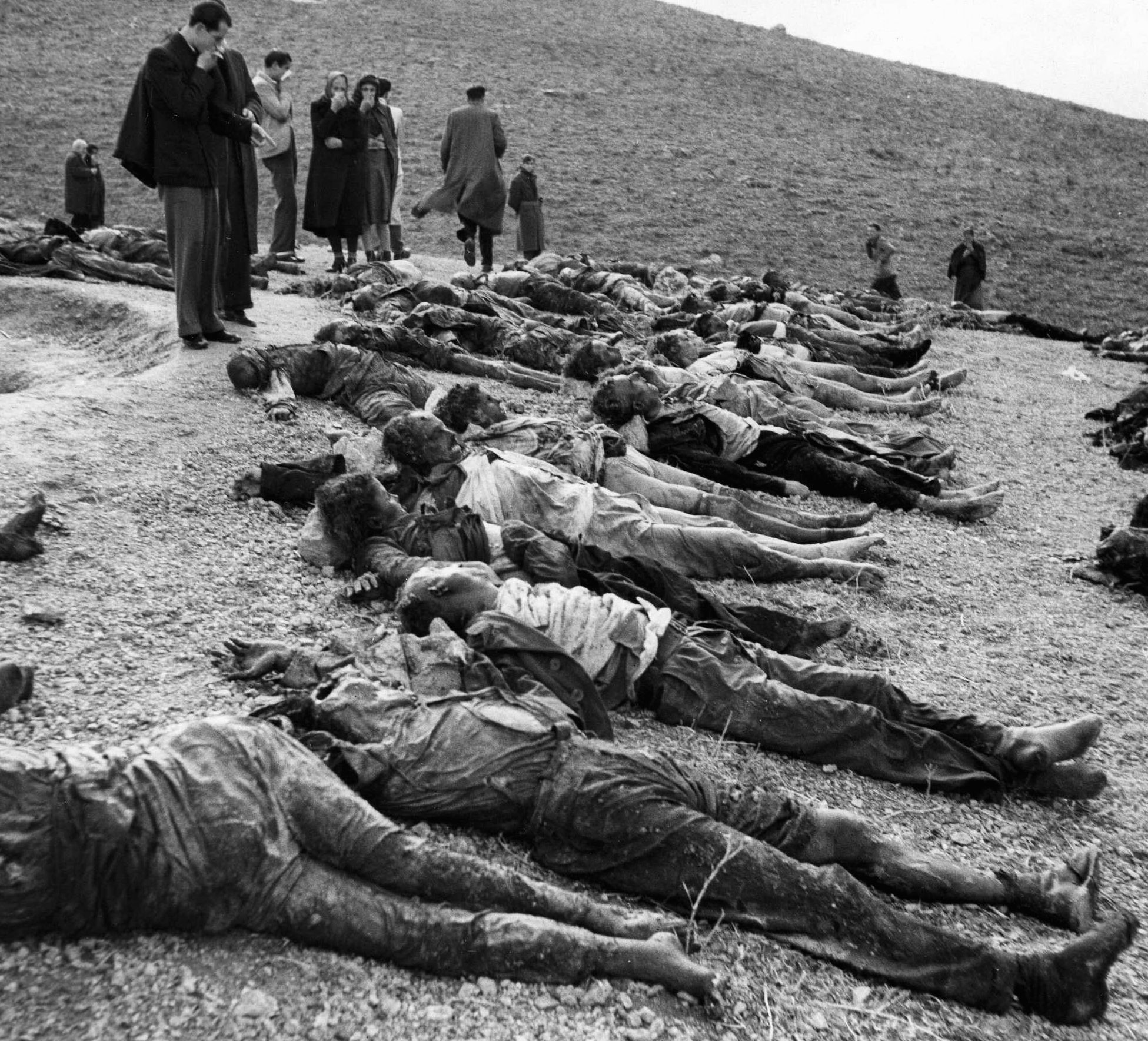
near where they were murdered.
At the same time, the Military Mission was to help the Greeks form and maintain a temporary government to see the country through to formal elections. Consequently, the British forces assembled in Greece were ill prepared for internal security operations. Their training and psychological preparation had been in applying maximum force against heavily armed, easily identified, and aggressive opposition in the form of German forces among mountains and river valleys of Italy. Suddenly, they were expected to engage fleeting and indistinct opponents darting through the back streets of Athens where only minimum force was to be applied.
The Athens Corps of ELAS was commanded by Athanasios Klaras, officially its second in command but its de facto field commander. He surrounded himself with 50 bodyguards wearing Astrakhan hats and black beards, ruffians of the first order. Klaras had a fearful reputation for cruelty and despised all things British. He liked to style himself as Ares after the ancient Greek god of war. Decency was meaningless to him, and stretcher parties could expect to be fired upon. Ambulances carried ammunition and civilian hostages. Children were forced to carry messages, while ammunition was carried by old women in their shopping baskets and young women in their baby’s carriages.
Late in 1944, Panayiotis Kanellopoulos, the Greek Navy Minister, appeared in Cairo. Pale and shocked, he reported massacres in the Peloponnese at Pirgo and Kelami perpetrated by Ares with as many as 10,000 killed. Only the presence of a British detachment prevented further atrocities at Sparta. When asked if he had killed 1,200 in the Peloponnese with his own hands, Ares answered, “The figure is wrong, I killed 2,000.” He was known by various names in the British Military Mission where liaison officers accused him of sadistic pleasure in the infliction of pain. Among the mildest was “Archbastard.”
At all levels there was a misunderstanding of the size of the task facing the British. The 2nd (Independent) Parachute Brigade had been scheduled to leave Greece until a directive from Prime Minister Winston Churchill arrived. In a telegram to London, Scobie’s superior, General Sir Henry Maitland Wilson, stated that he did “not anticipate that he [Scobie] will have any difficulty in dealing with any disorders that may occur in that area.” And at the tactical level, there was similar confidence that order would be swiftly restored. Throughout the first day, British troops tried to persuade ELAS groups holed up in police stations to surrender to them, prior to reestablishing Greek police control. At the same time, ELAS continued to attack others outside the reach of British troops.
The only regular forces available to support the government in Athens were the British 23rd Armoured Brigade, 2nd (Independent) Parachute Brigade, 139th Brigade (which had been scheduled to replace it), and the 3rd Greek Mountain (Rimini) Brigade with an additional artillery regiment acting as infantry. These were officially constituted as “Arkforce” at 9 pm on December 5 with a headquarters set up near III Corps just north of Constitution Square. The city was divided into four brigade areas, and clearing operations were scheduled to begin at dawn the following day. As this was taking place, administrative units working in areas dominated by ELAS were to continue as normal without provoking an attack. The only restriction laid down was that a warning was to be issued before opening fire. Unarmed crowds were not to be engaged except with solitary warning shots if they interfered with operations. Buildings occupied by ELAS units could be engaged without regard to other occupants.
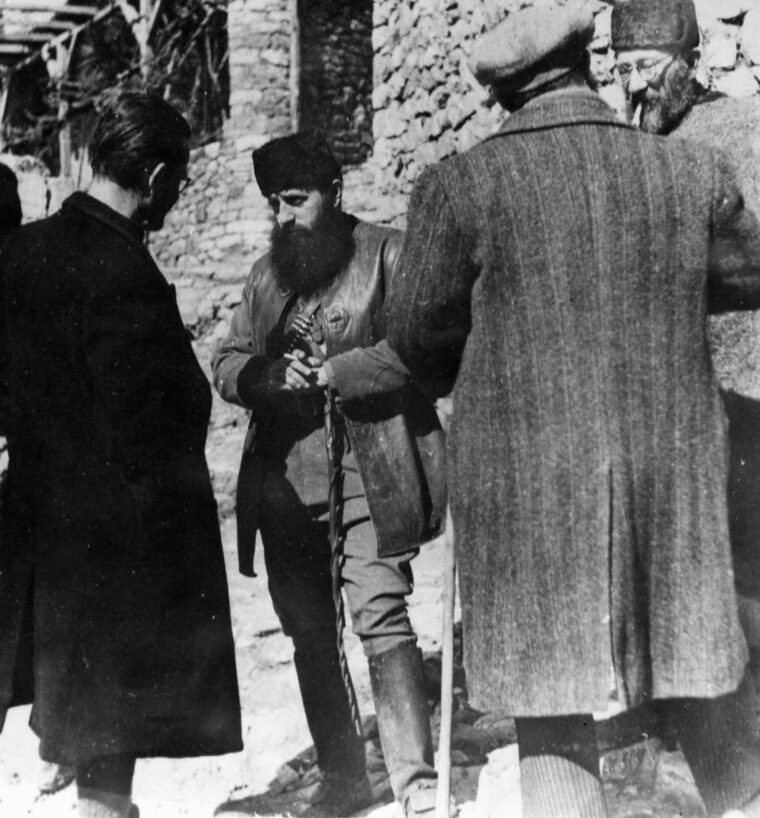
The 16th Battalion Encountered Mines, Obstacles, and Strong ELAS Forces in the Narrow Streets of Pireaus.
Arkwright’s main concern was his supply routes. Most of the troops were in central Athens, and the sea and air terminals were only lightly held. Shipping had been diverted into the Straits of Salamis to be unloaded onto the Piraeus Peninsula and Faliron Bay. These major supply dumps were defended by just one squadron of the Royal Air Force Regiment with another two guarding the airhead at Kalamaki. In support, they had only the 64th Light Anti-Aircraft Regiment, Royal Artillery, operating as infantry and covering a very wide area. These detachments might easily be overrun if not supported. Consequently, the 2/5th Battalion, Leicestershire Regiment was sent to secure the naval headquarters and clear the docks. The 16th Battalion, Durham Light Infantry was dispatched to clear the Faliron Bay beaches.
The 16th Durham Light Infantry soon met up with the RAF Regiment and on the following day worked its way around to where the built-up area of Pireaus began. Here the 16th Battalion encountered mines, obstacles, and strong ELAS forces in the narrow streets. With his troops strung out in a long line, the commanding officer realized his vulnerability but decided to bluff his way out. He was assisted by the repulse of an infiltration on the night of December 8. Meanwhile, the 2/5th Leicesters had a thornier problem to grasp. After skirmishing, they were aided by two tanks in dispersing a crowd besieging the naval headquarters. They then commenced a methodical advance toward the docks at Leondos Harbor.
At midday on December 7, the Leicesters encountered a strong ELAS position blocking the narrowest point of the peninsula. This checked their progress, and infiltration to their rear forced them back to the naval headquarters. The 139th Brigade now had two battalions pinned down on either side of Kastella Hill, which was occupied by ELAS in old German positions that had originally been constructed to withstand air and naval bombardment.
At the same time, the belief that resistance would be feeble had been dispelled in central Athens. ELAS fought back hard wherever attacked and infiltrated wherever lines became thin and overextended. On December 6, operations went quickly and smoothly until ELAS became aware of what was going on. The 50th Battalion, Royal Tank Regiment, operating dismounted as infantry, cleared Stadium and University Streets, capturing EAM headquarters and taking the staff completely by surprise.
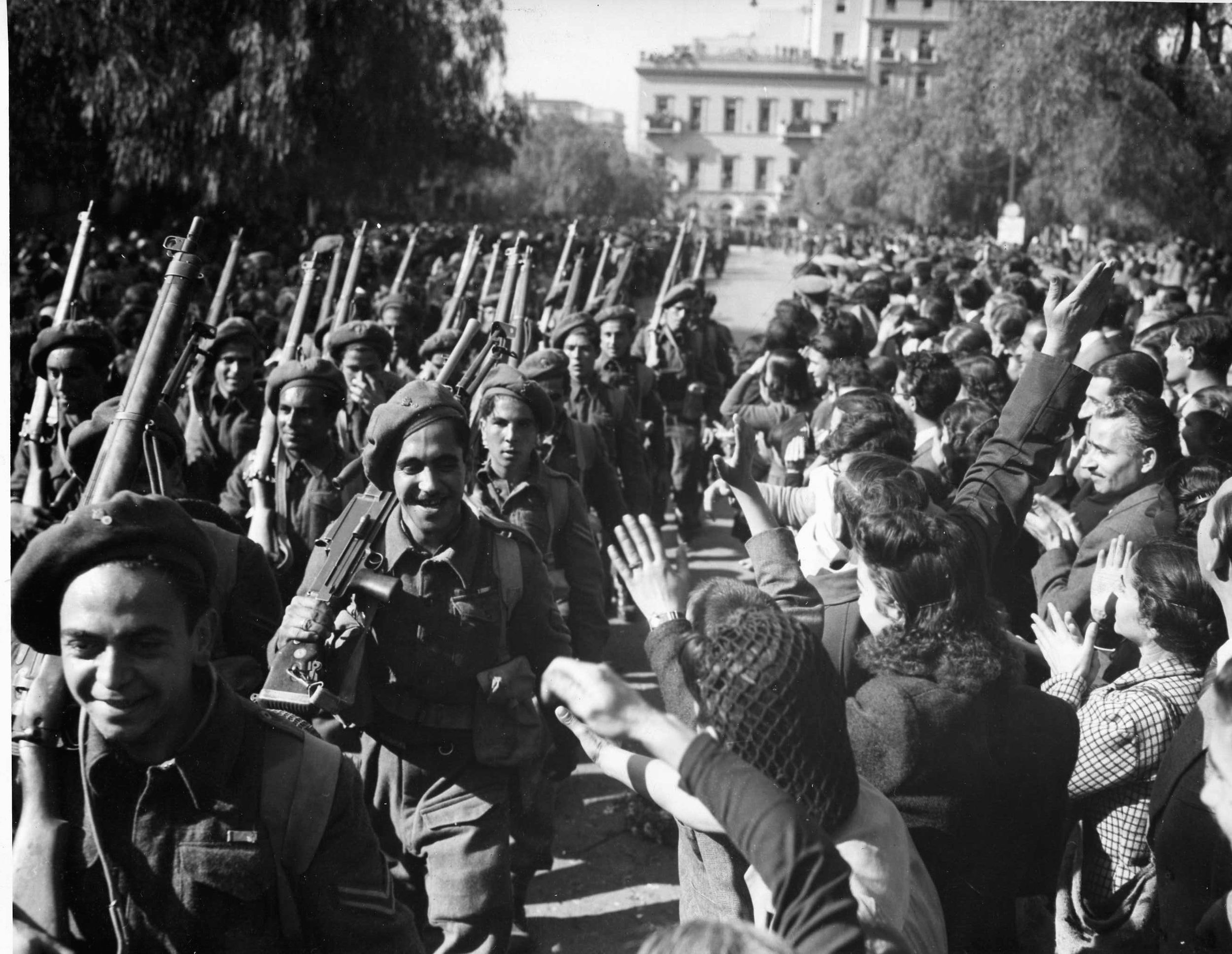
Meanwhile, the 2nd Battalion, Highland Light Infantry cleared the Kolonali district, and an observation post was established on top of Lykabettos Hill to enable the 463rd Battery, Royal Horse Artillery to support all three brigades in Athens. The Fifth Battalion, Parachute Regiment swept through Hadrian’s Arch and cleared the Royal Palace and Gardens, securing the Acropolis the next day. The 3rd Greek Mountain Brigade, supported by two troops of the 46th Liverpool Welsh Battalion, Royal Tank Regiment, and the guns of the Royal Horse Artillery, managed to clear Kouponia suburb but were stopped short of Kaisariani.
Altogether, it was becoming clear to Arkwright that he would need to reconsider his plans if he was to secure a perimeter to protect the vital points. Only the inexperience of the ELAS command prevented what was a singularly precarious position for the British from becoming untenable. At the beginning of the operation, they had barely three days of supplies in central Athens. To complicate matters, the main depot was at Rouf Barracks, well within the ELAS-controlled area. Despite seizing the Fix Brewery, ELAS did not attempt to block the running of a convoy of trucks escorted by scout cars and armored command vehicles supported by tanks from the 46th Royal Tank Regiment.
Arkwright forwarded a revised assessment of the situation to Scobie on December 8. He advocated immediate restoration of law and order in Athens and Piraeus. Under conditions of total war, he had enough troops for this, but with restrictions on the use of force, he argued that he would require at least two more brigades. With the arrival of 5th Indian Brigade, diverted from Crete, the only source of additional troops would involve evacuating Patras and Salonika.
General Scobie decided, however, that he would need to hold these to concentrate the 4th Indian Division. Two battalions of the 23rd Armoured Brigade would be recalled from the Peloponnese and Thessaly into Athens. Other naval detachments would be called in, but he urgently signaled Wilson requesting the balance of 46th Division (of which 139th Brigade was a part), an armored car regiment, and 35 Sherman tanks to complete the reequipping of the 46th Royal Tank Regiment. He commented, “I intensely dislike applying for more troops at this stage but in view of the Prime Minister’s strong directive I feel that … reinforcements for Athens are essential if I am to be able to carry out his policy in a satisfactory manner … We are up against a very tough and determined organization.”
Greek Killed Greek, and ELAS Tried to Drive Out the British.
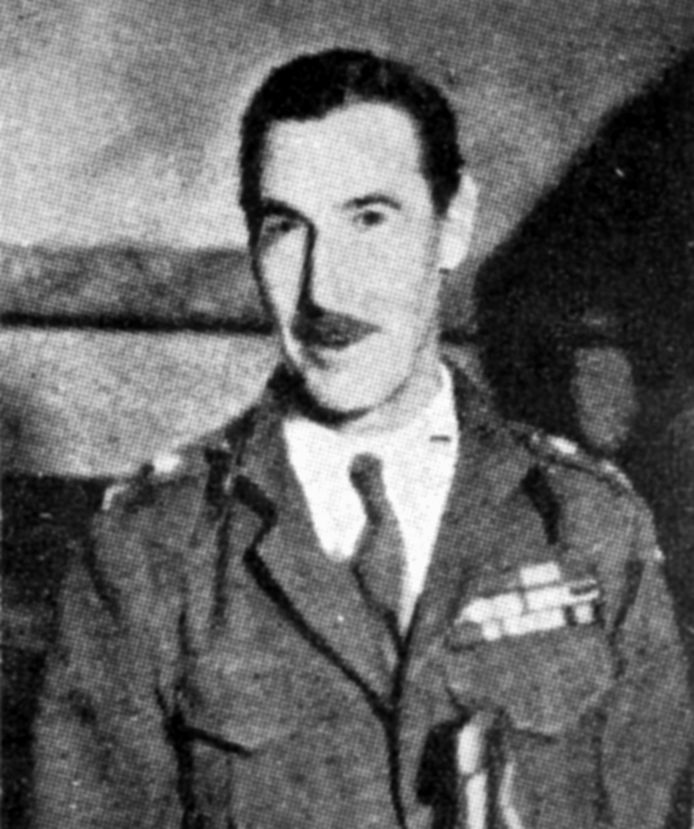
Churchill was keeping a close eye on developments and put pressure on Wilson who, unable to provide the balance of the 46th Division decided to divert the 4th Division instead. ELAS had control of the city waterworks, power station, telephone exchange, and most of Piraeus. The 139th Brigade held the southern arm of the harbor at Kalliopolis, and the 5th Indian Brigade had a stiff fight to reopen the Piraeus docks. Its 1/4th Battalion, Essex Regiment opened this operation on December 10 along the north shore of the peninsula. On the 12th, the 1/4th cut across the neck to form a cordon while the two Indian battalions, the 3rd Battalion Queen Mary’s Own, 10th Baluch Regiment, and the 1st Battalion, 9th Gurkha Rifles cleared the remainder supported by a handful of the ever-useful tanks of the 46th Royal Tank Regiment. On the night of the 14th, the Gurkhas cleared Kasyella Hill and its dominating heights, thus relieving the enormous pressure on the 16th Durham Light Infantry.
Having been in almost continuous action since May, the 4th Division was making its way through Italy en route to Palestine for rest. On December 9, its commander, Maj. Gen. A.D. Ward, received orders diverting his formation to Greece. From Taranto, parties moved to Pescara to collect guns and equipment previously left for the 5th Division to take over. A tactical headquarters was set up in Old Faliron southwest of the city on the 12th, while the 28th Brigade landed at Hasani airfield under small arms fire. These troops were transported in the bomb bays of 20 old Consolidated B-24 Liberator and Vickers Wellington bombers, with essential baggage brought in by nine Douglas C-47 Dakota transports. The 2/4th Battalion, Hampshire Regiment immediately secured the airfield, and the 2nd Battalion, King’s Regiment (Liverpool) moved to join Arkforce.
The airfield was secure, and the road along the coast had been kept open, but all movement of humanitarian aid, of which the civilian population was in desperate need, had to be suspended while the merchant ships bringing it to Salamis Bay rode idly at anchor. Greek killed Greek, and ELAS tried to drive out the British.
Peter Holloway, an artillery observation officer, recalled, “My first shoot was with the guns of a Greek cruiser, with a British officer on board to translate my orders. This was for political reasons, as it was considered undesirable at that stage for British guns to be firing on Athens. I am possibly the only British officer to have directed the fire of a Greek cruiser and on Athens at that!”
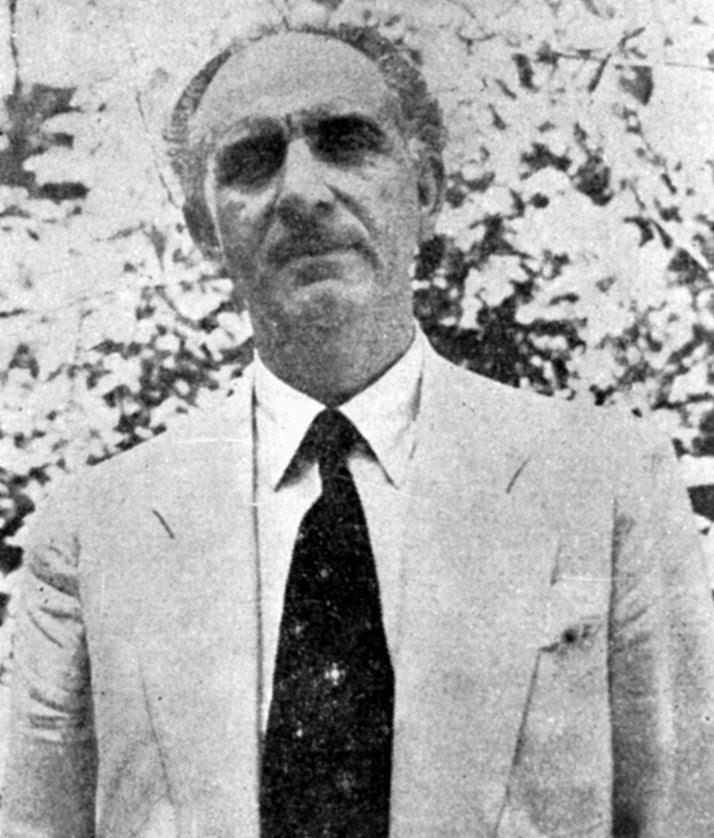
Arkwright decided to abandon commitments outside the city center. He pulled men in from Sangros Prison and found them essential. In central Athens, the British were penned in. On the night of the 12th, ELAS launched an attack with the equivalent of a division. However, it was badly planned, coordinated, and executed and was driven off despite the infliction of 60 casualties and the capture of 100 ELAS prisoners. The British lost 30 dead and 40 taken prisoner.
The first task of the 4th Division was to secure a beachhead at the foot of the Leoforus Singros, followed by opening the road between Piraeus and the airfield. On the left, the 139th Brigade cleared the peninsula, and the logistic and operational base was set up to permit the drive to Athens. The 139th Brigade now took over the port, freeing the 4th Division to concentrate on this operation. While still in sight of the bay, it would be supported by destroyers offshore along with guns from the 4th Indian Division on an island in the bay. Tanks from the 40th (The King’s) Battalion, Royal Tank Regiment would provide close support. The operation began on the night of December 17 with an advance up the Leoforus road by the 2nd Battalion, Somerset Light Infantry (Prince Albert’s) from the 28th Brigade. They succeeded in reaching the first crest of the road, some two miles inland at dawn.
Ahead lay the strongly defended Fix Brewery, which the assault troops of the Hampshires took completely by surprise after an approach in rubber-soled shoes. Blowing in the doors with pole-charges and with direct fire support from the tanks, they killed some 20 of the garrison and sent the remainder fleeing. By 10 am, the Brewery was secure and the houses 200 yards on either side were cleared. Meanwhile, the 2nd King’s, supporting Arkforce, advanced toward the brewery from the direction of the Acropolis, some half a mile or so northward, and joined up with its parent formation. Meanwhile, the 173rd Brigade followed up, clearing the suburbs to either side of the Leoforu. It was followed in turn by the Greek National Guard. The Greeks cleared every house from attic to basement a second time.
This was a new type of warfare for troops used to fighting the formidable German Wehrmacht. Few ELAS fighters wore uniforms, and many that did wore British battledress or Greek National Guard patterns. They moved among the civilians, making use of the advantages that guerrillas have of blending into the background. Areas cleared by the British would be reinfiltrated by ELAS, requiring clearing once more by the National Guard. The Greeks were very effective at this task, but would probably have been of little use against a conventional opponent. They were particularly effective at winning the information battle so crucial to such operations, finding weapons caches, and discovering ELAS troop movements.
The Archbishop of Levadia Rode in on the Commanding Officer’s Jeep and Stood on the Hood to Make a Passionate Speech Welcoming “Our Gallant British Liberators.”
On December 20, the 10th Brigade moved up on the right of the Leoforus to New Smyrna to clear the suburbs between the city and the coast, and 12th Brigade closed up on the left. They cleared the streets between the Leoforus and the Ilissos Rivers to a point just short of the brewery as the 28th Brigade cleared around the Brewery itself. These operations were complete by December 22. The following day, 12th Brigade wheeled north and crossed the road moving forward a mile or so. On Christmas Eve, the 2nd Battalion, Royal Fusiliers (City of London Regiment) holding a factory were subjected to a violent attack by ELAS, which poured fire through the windows and breached the wall with explosive charges. Those that got in, however, were swiftly ejected, though they continued their attacks throughout the night.
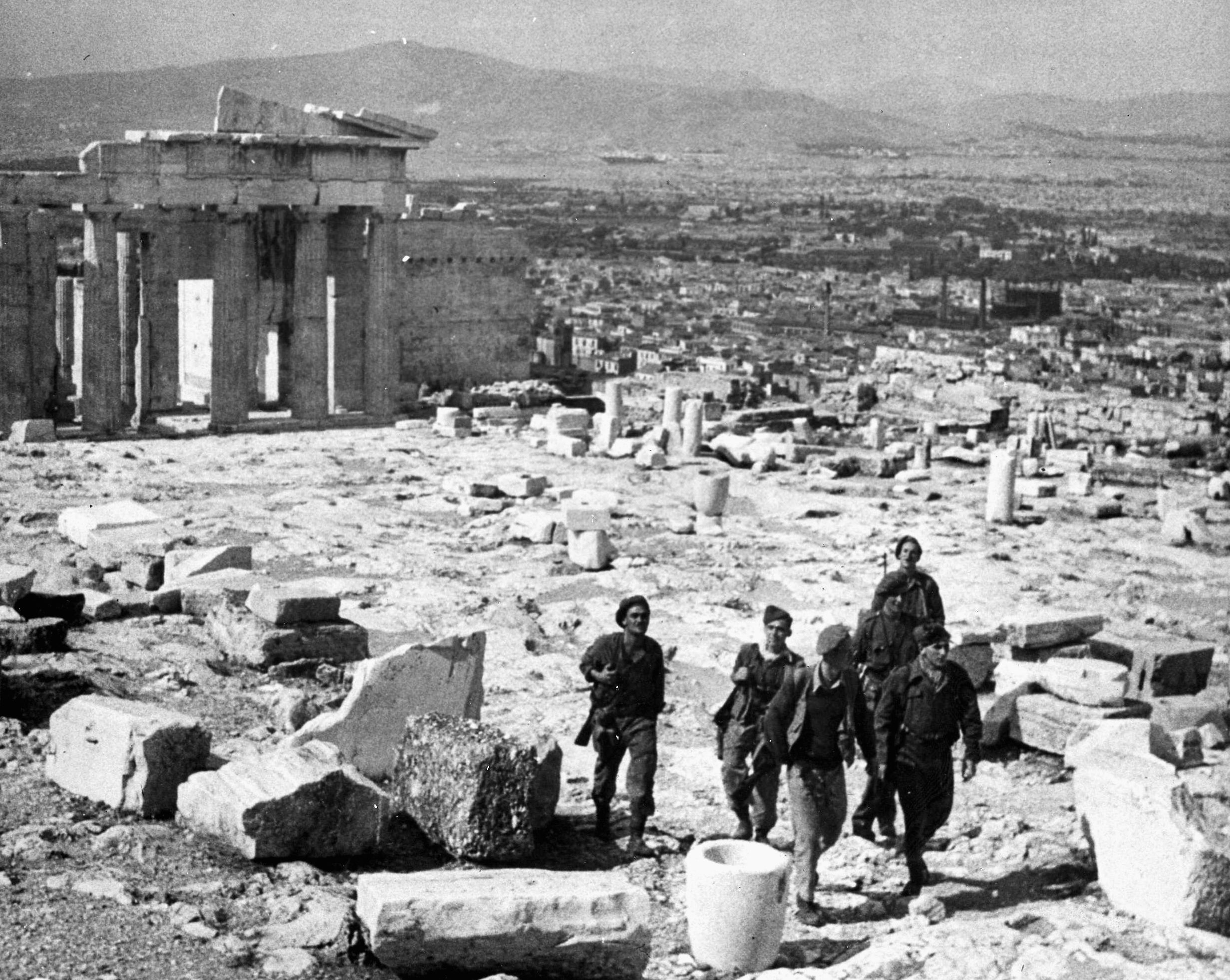
the city.
The poor bloody infantry spent Christmas day clearing snipers, roadblocks, and arms caches. Nonetheless, the 28th Brigade managed to put on a party for 150 hungry kids in New Faliron.
If ELAS hoped to catch the Tommies off their guard, they were disappointed. An attack across 12th Brigade’s front beginning at midnight was heavily repulsed and died away after an hour. Around the same time, the 139th Brigade and Arkforce had advanced from the south to link up to the right of 12th Brigade, thus securing a strip of road joining Athens and Piraeus. Having raised the siege of central Athens, the forces were regrouped for the next phase: clearing the southern part of the city. This commenced at dawn on December 28 with a silent attack. By nightfall, 10th Brigade had taken the Drougouti and Katsipodi districts.
ELAS did its best to disrupt these positions, including an attack by troops in National Guard uniform on the 2nd Battalion, Bedfordshire and Hertfordshire Regiment. In the morning, however, the British advance continued with support from Arkforce and the 3rd Greek Mountain Brigade to the east of Zappion Gardens. The 28th Brigade struck eastward from the Brewery into Goura and Pankrati on December 31. The 3rd Greek Mountain Brigade also moved across the front of the 4th Division toward Byron, meeting up with the 1/6th Battalion, East Surrey Regiment and advancing through Imittos as the Bedfords penetrated Kopanas and the 2nd Battalion, The Duke of Cornwall’s Light Infantry pushed into Goura.
ELAS was now effectively driven from the south of the city. The north of the city would be subjected to a converging attack with the 28th Brigade coming from the east and 12th Brigade from the west. This began in the face of furious resistance on January 2 but broke through Averof, a mile and a half beyond its start line. Further to the right, the 4th Reconnaissance Regiment broke the ELAS cordon around the 97th General Hospital in the Psychiko Garden suburb. By January 6, the remnants of ELAS were streaming northward out of the city, pursued by British mobile columns. The Greek National Guard, now amounting to 11 battalions, was given responsibility for the cleared areas, which meant continually reclearing, searching, and rounding up the remainder of the stores, weapons, and explosives belonging to ELAS.
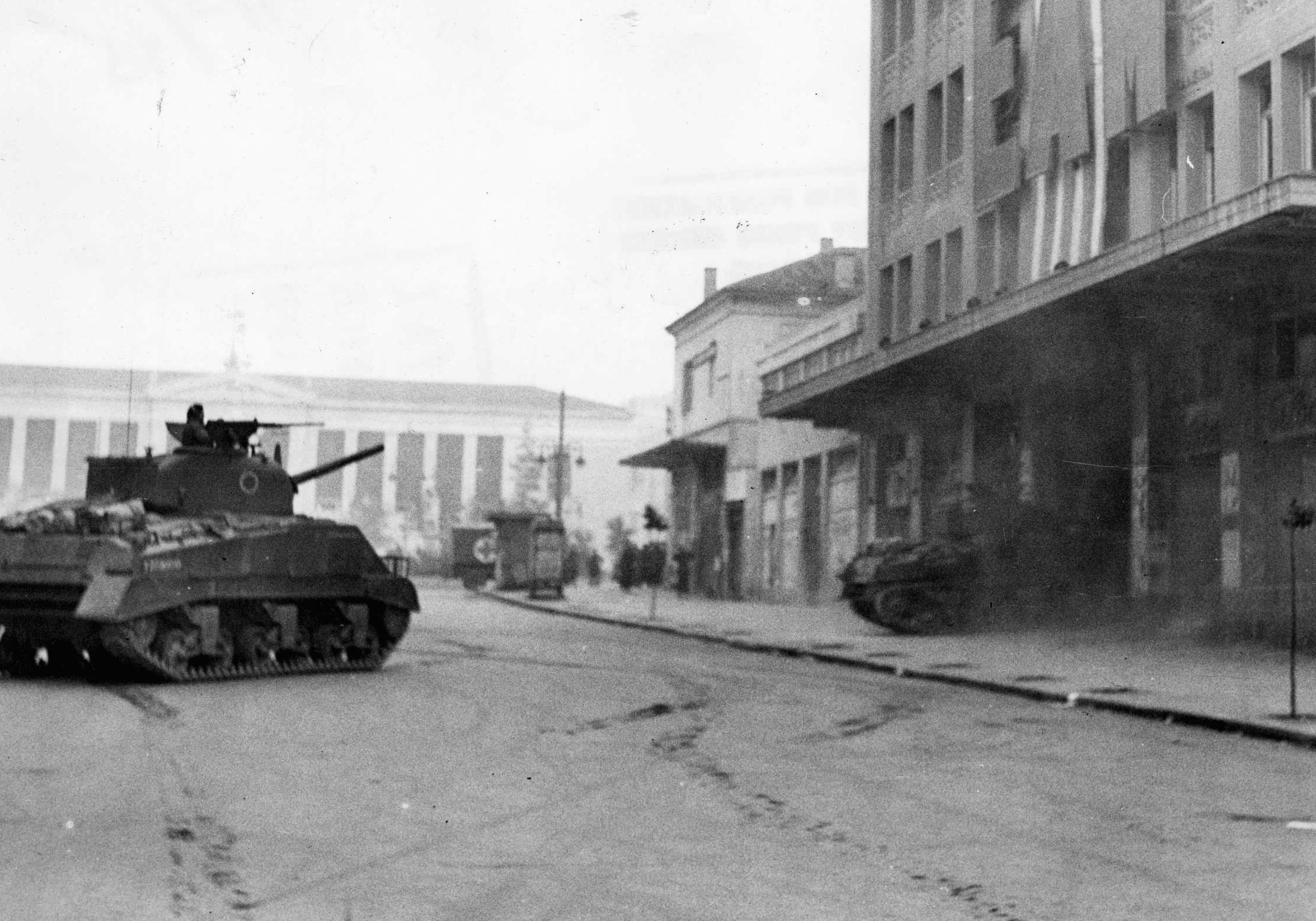
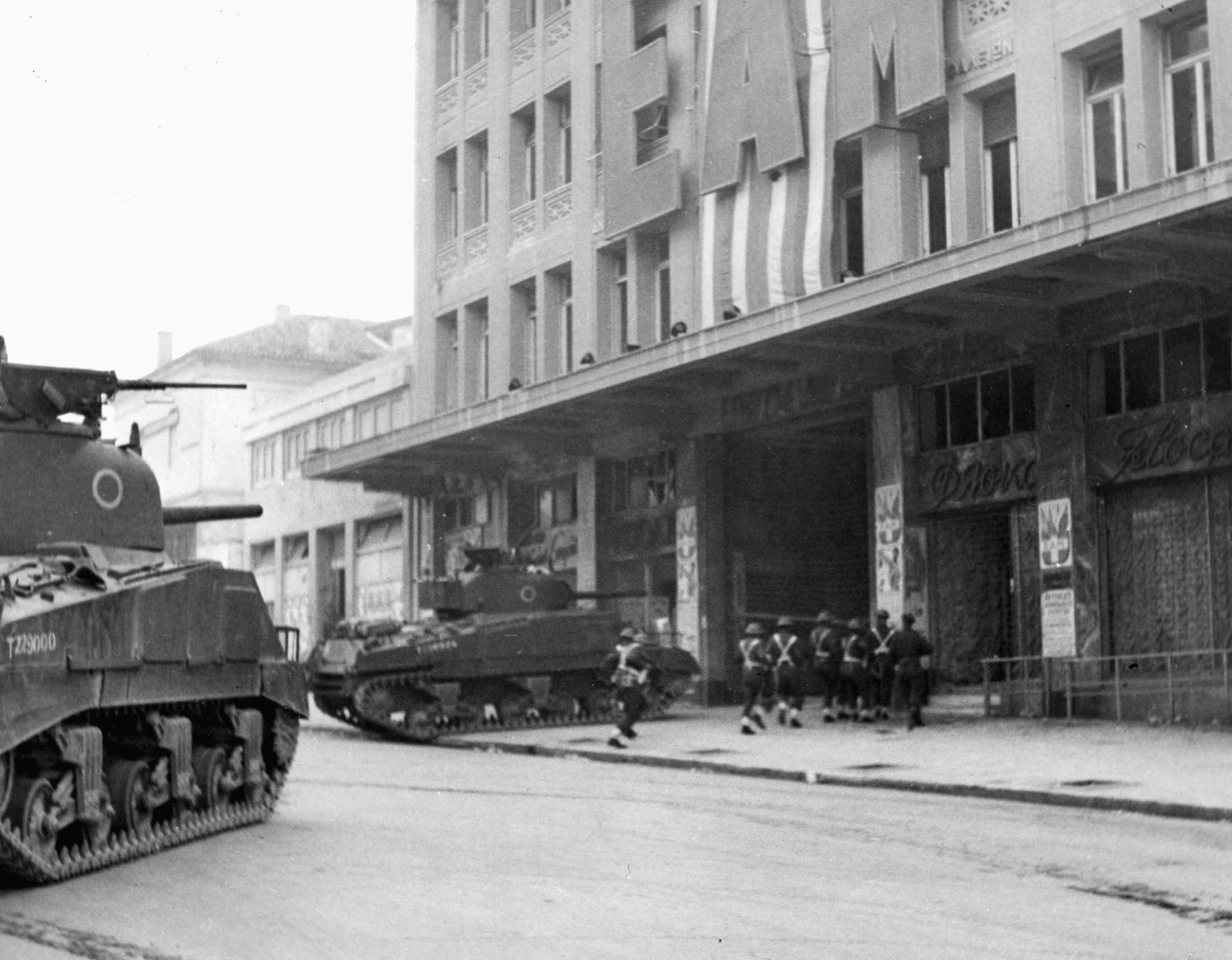
The pursuit was swift. By the evening of January 6, a squadron of the 4th Recce Regiment had reached Thebes and another opened the road to Lamia, 40 miles beyond Levadia, which was a dismal, brooding place and singularly loyal to EAM. Alternatively, the village of Petromagoula greeted the Royal Fusiliers with delirious pleasure. The Archbishop of Levadia rode in on the commanding officer’s jeep and stood on the hood to make a passionate speech welcoming “our gallant British liberators.”
The city’s divided loyalties were symptomatic of rivalries dating back to ancient times. The physical nature of the country sustained a social and political independence that degenerated into bickering and isolationism so that persuading Athens, Thebes, Sparta, and Corinth to act together, even against the common foe, had proved practically impossible for the British. Having unified in to kick Mussolini out of the country, these differences resurfaced during the German occupation. Arms supplied to assist the resistance against the Germans were used in internecine strife or spirited away for use in a future civil war.
Once the strategically important towns were secured, and with ELAS scattered and disorganized, EAM was forced to face reality and a truce was signed on January 14. ELAS was to withdraw from Attica, Boeotia, Phocis, north Pelopponese, southeast Thessaly, the Ionian and Aegean islands, and Euboea. All combatants and British civilians were to be exchanged for an equal number of ELAS prisoners. On February 12, a final agreement was signed enabling the 4th Division to move into Thessaly and the Pindus Mountains to take over dumps of ELAS weapons surrendered under the agreement. This also permitted the resumption of relief work.
For the time being at least, things were resolved, but the Communists had other plans, and the British were to find themselves engaged in a bitter guerrilla campaign the following year. It would take three more years to subdue the Communists.
Jon Latimer is the author of several books on World War II. His most recent work is Burma: The Forgotten War. He lives, writes, and teaches in Great Britain.
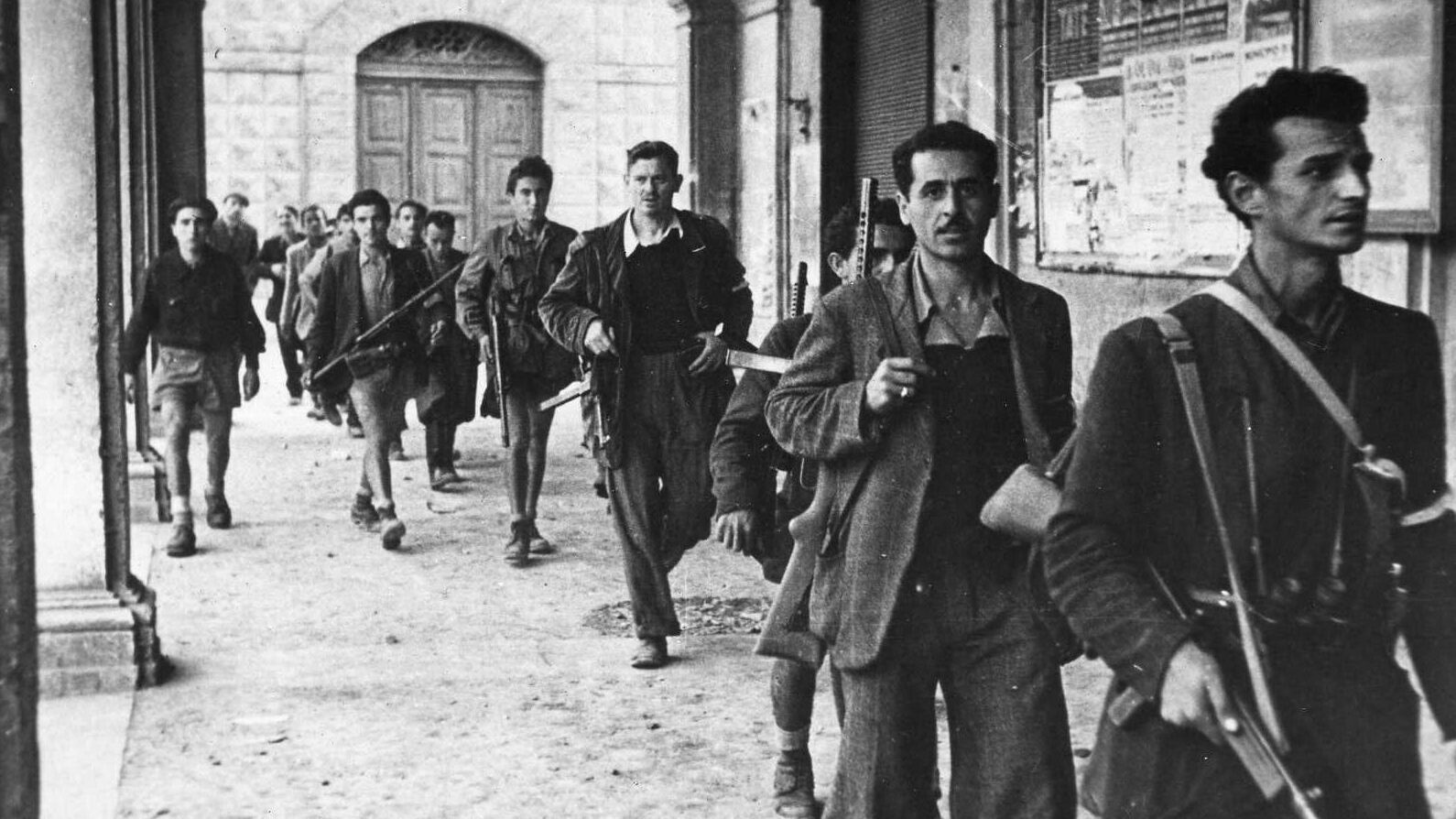
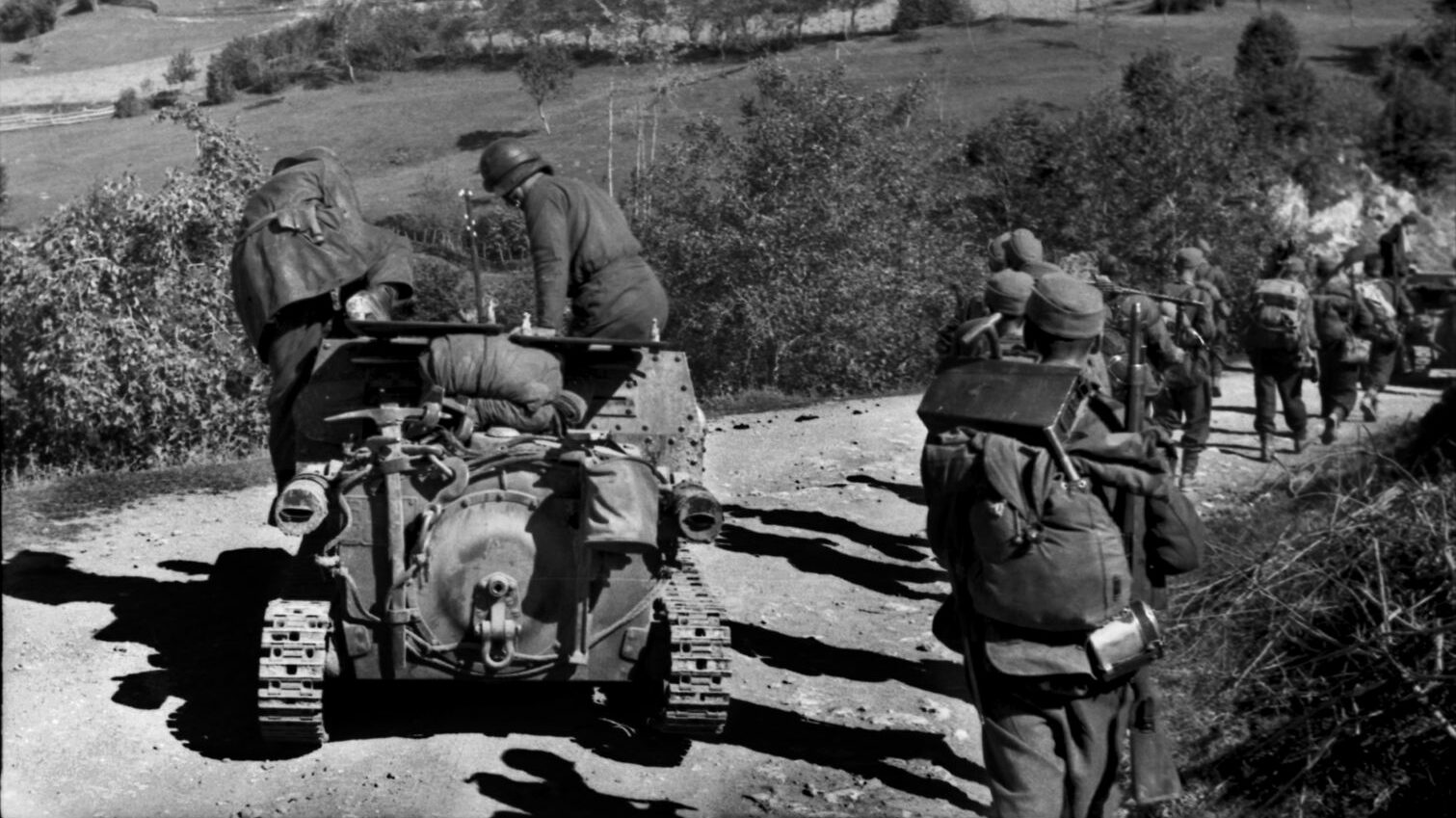
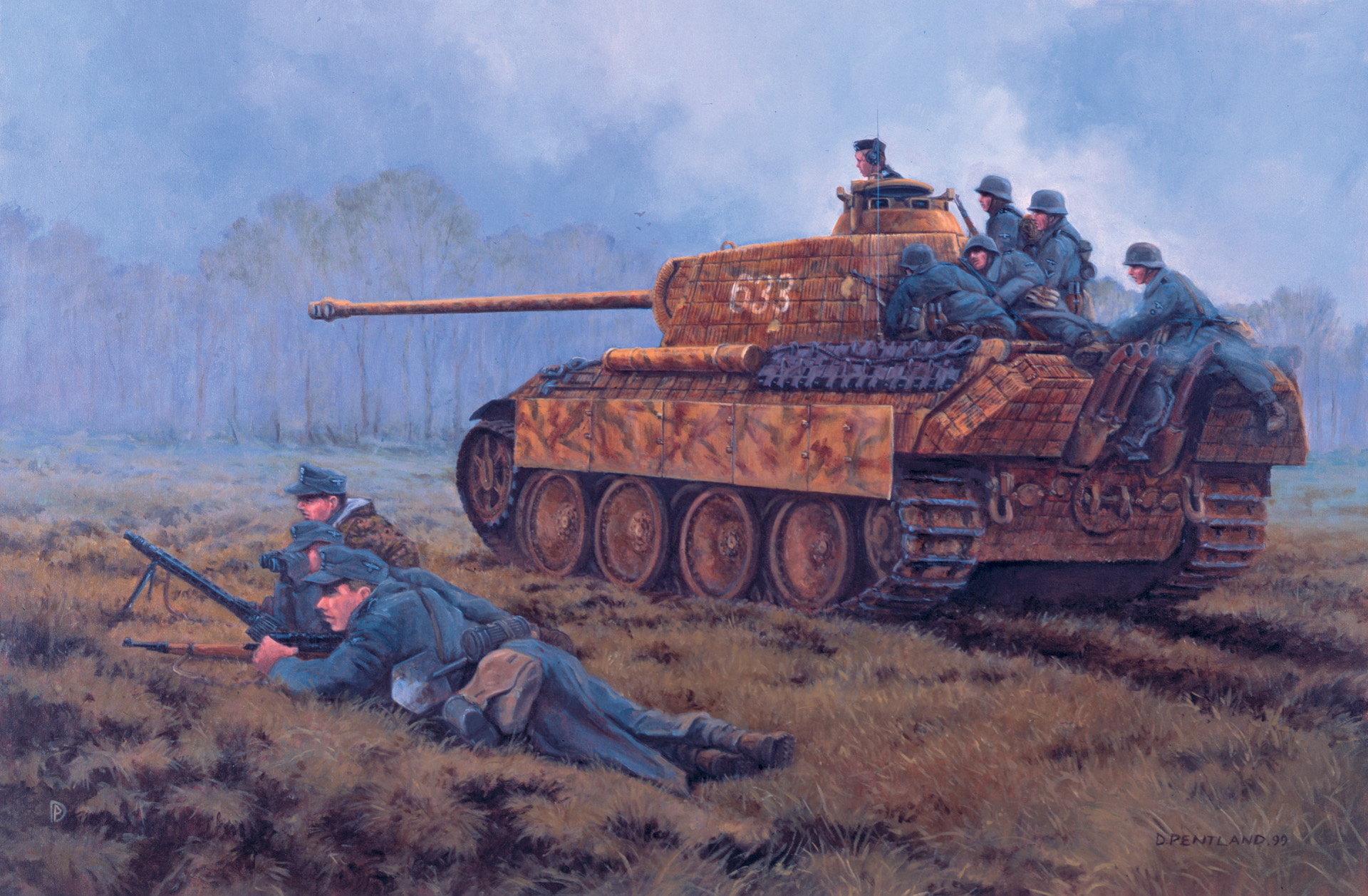

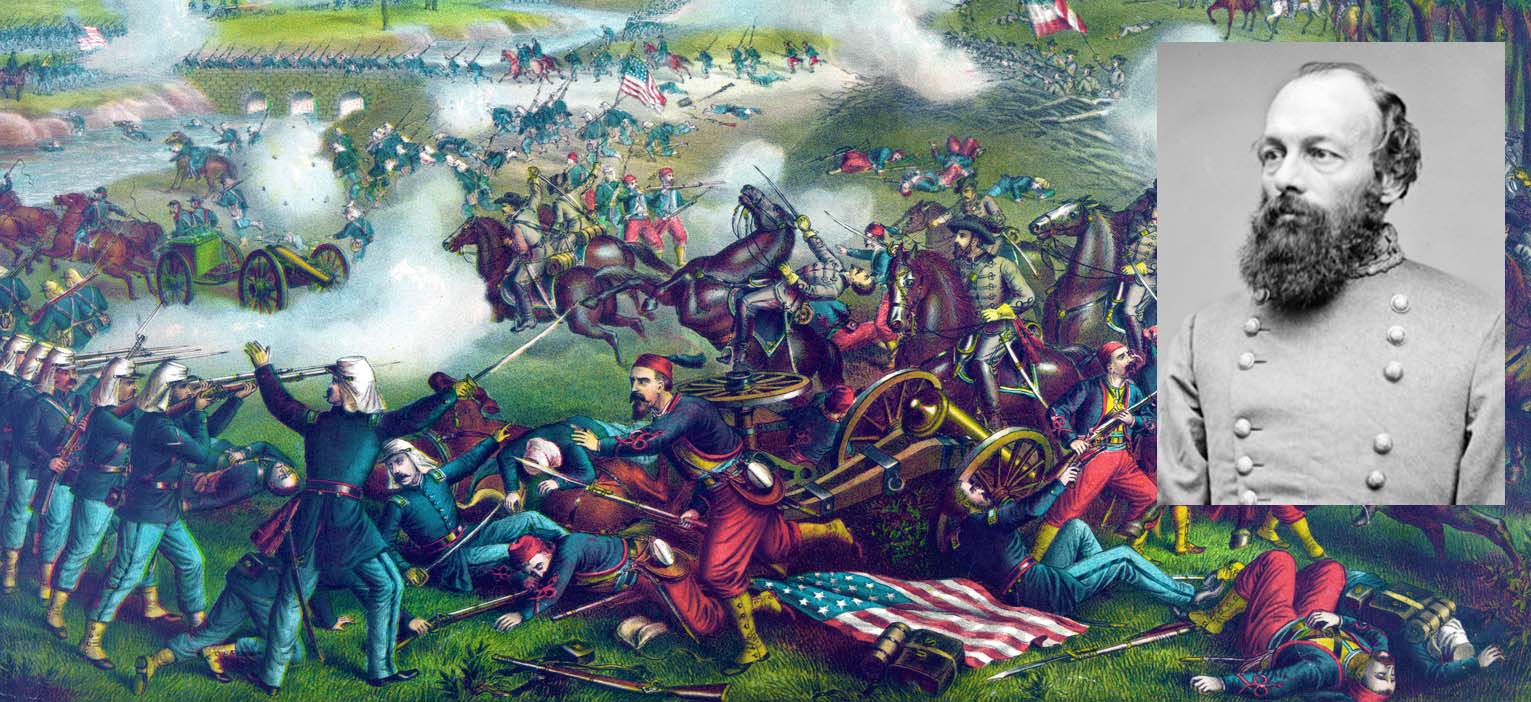
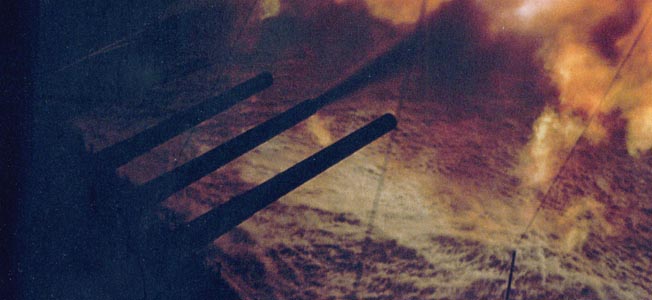
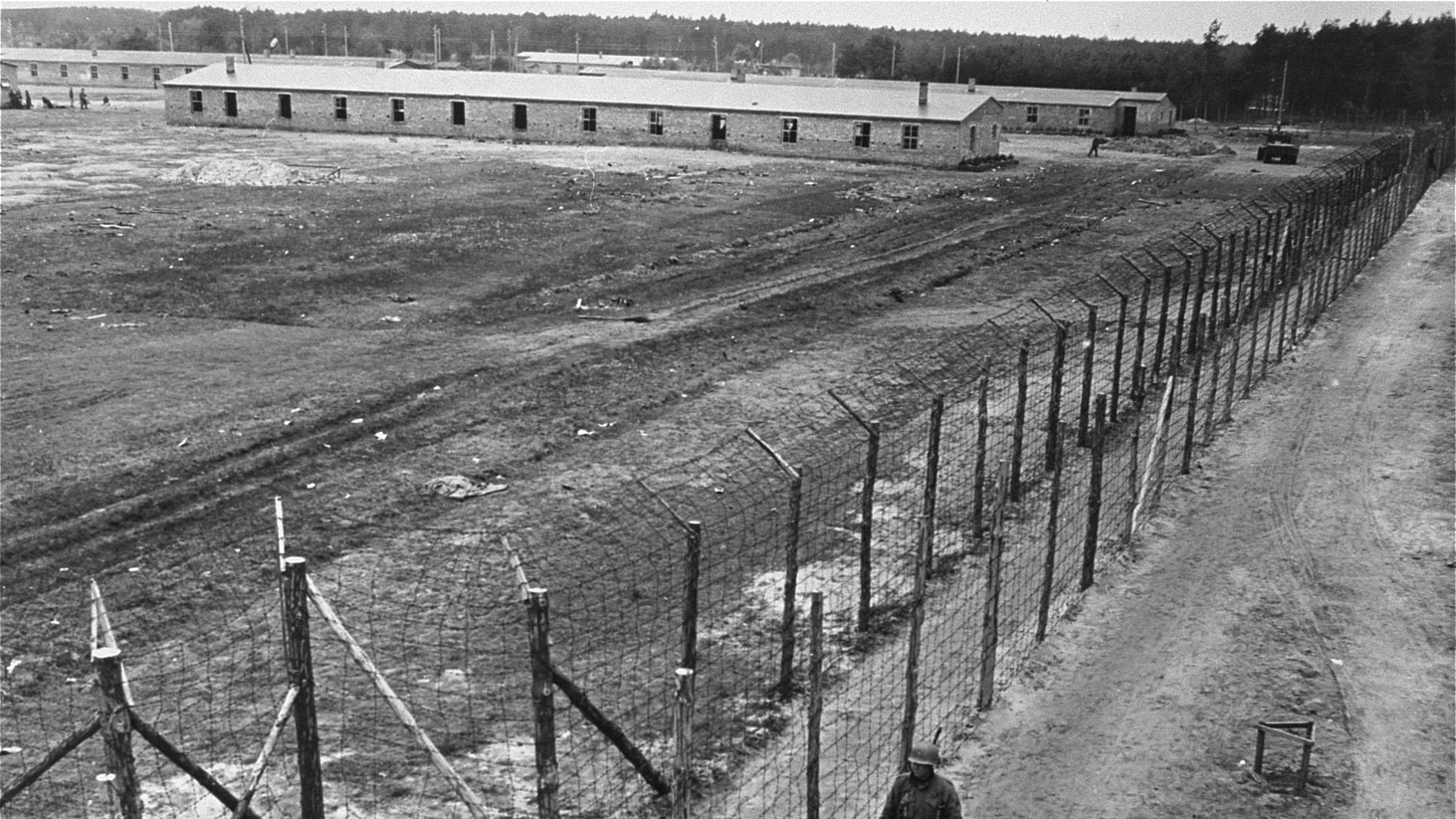
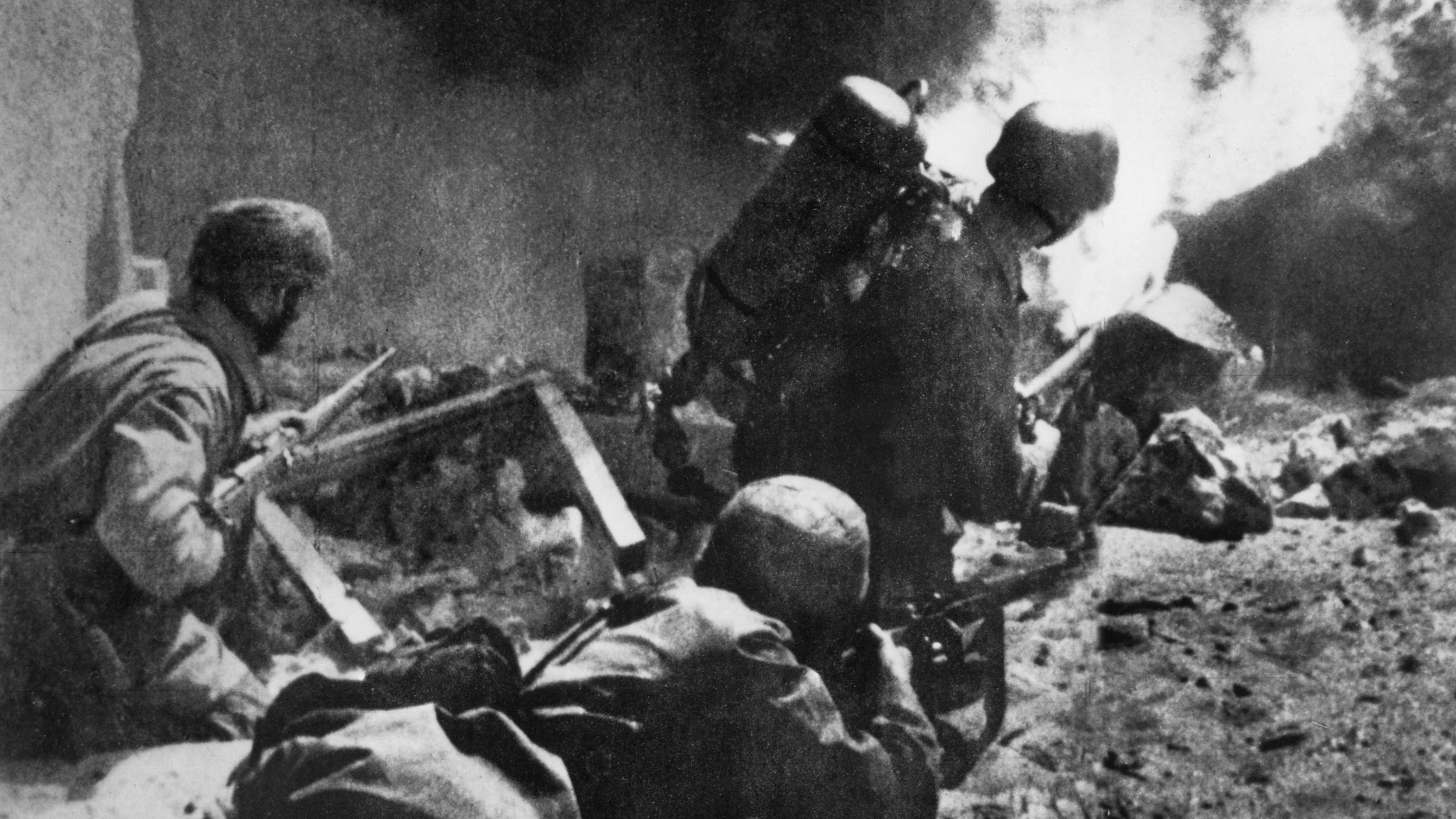
Thank you Mr. Latimer, it was a very concise description of those events.
Churchill’s visit to Athens in late 1944, while the 2nd WW was still raging, explains the importance of Greece not falling in the Soviet sphere of influence, an idea that somewhat goes back 200 years.
The non-existent at the time Greek army due to the German occupation, was in great need of the British support.
Unfortunately, as you know, these events were followed by the Simoritopolemos “gang-war”, when the Simorites “gangs” of communists tried again to take over Greece.